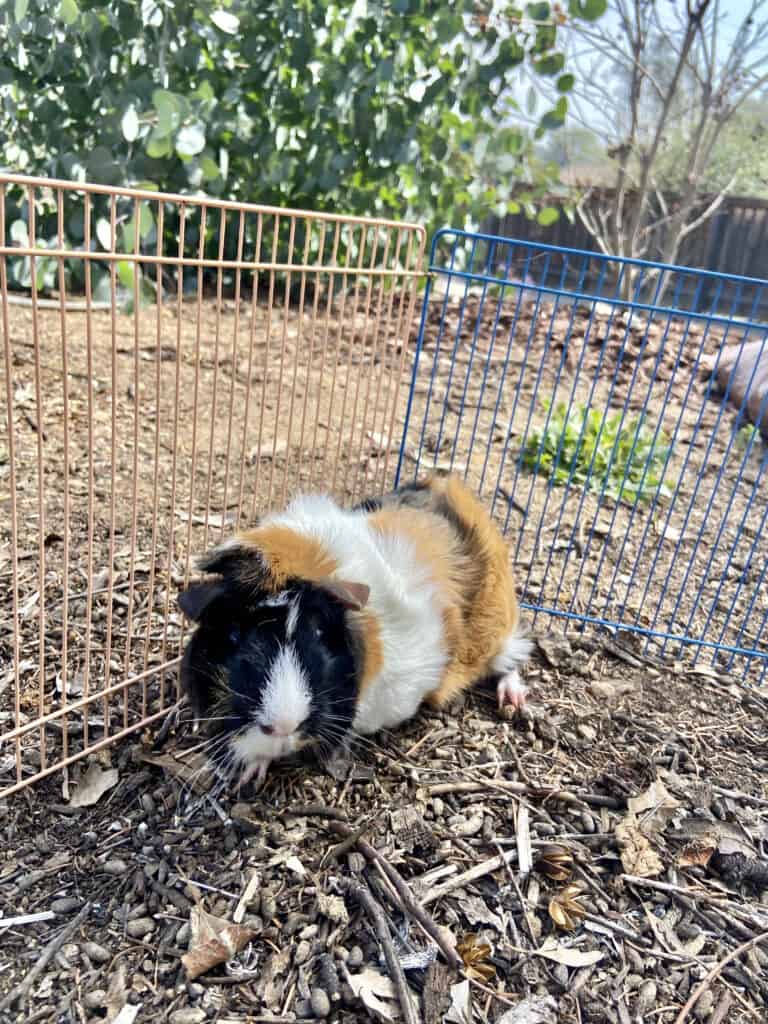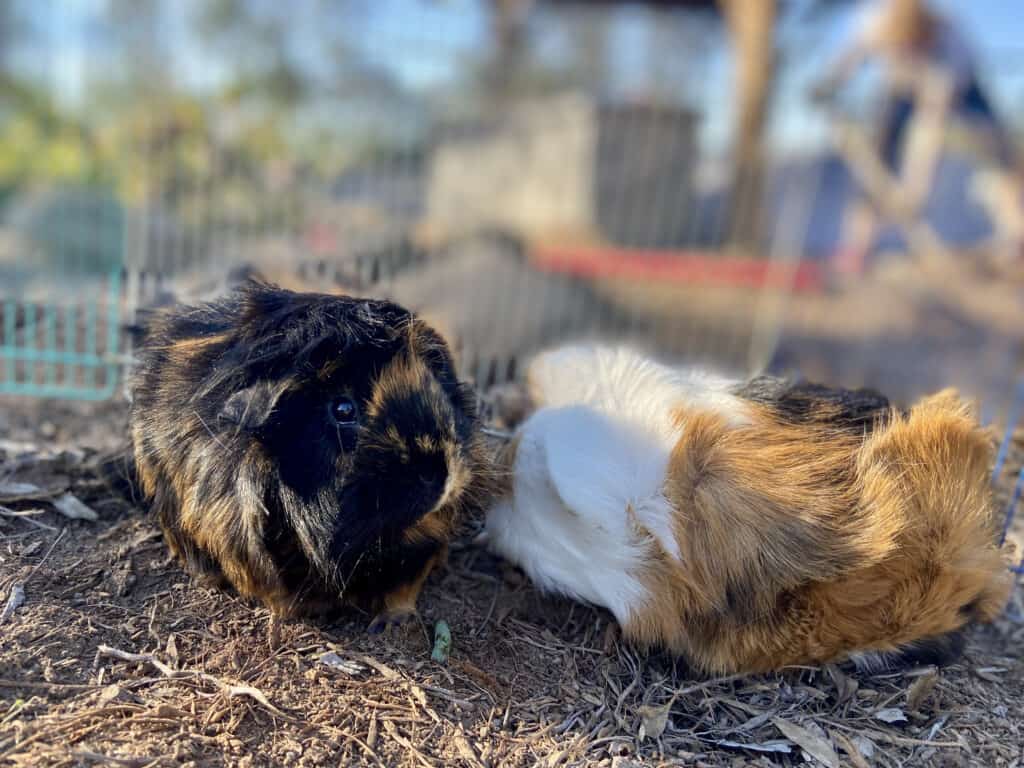As an Amazon Associate we earn from qualifying purchases.
Corn is a vegetable high in carbohydrates and is a staple food for many people around the world. It is also a common ingredient in many processed foods. Can guinea pigs eat corn?
Can A Guinea Pig Eat Corn?
There are a lot of myths and rumors floating around about what they can and cannot eat. One popular question is whether or not they can serve corn to their furry pets. The answer is yes, they can eat corn, but it’s not their favorite food.

Corn Benefits
Corn is a popular food for guinea pigs and is beneficial to their health. Here are some of them:
- It is a good source of energy, and it also contains important nutrients like vitamin C, vitamin B6, and potassium.
- In addition to being a healthy food, corn is also a tasty one. They will love the sweet taste of fresh corn, and they’ll benefit from its nutritional value as well.
- It is a great source of fiber for a guinea pig’s diet and is very beneficial to their digestive system. Pets that eat a diet high in fiber are less likely to develop gastrointestinal problems.
- It is also a good source of Vitamin A, which is important for keeping their eyes healthy.
- Lastly, it provides essential nutrients and antioxidants that help protect them.
How Much Corn to Feed
Your furry friend should eat about 1/4 cup of corn per day. You can give them more if they want, but don’t exceed 1/2 cup per day. Too much corn can cause digestive problems and chronic diseases, so it’s important to stick to the recommended amount.
So, yes, they can eat corn, but you should only give them a small amount each day. They’ll love the taste and will benefit from its nutritional value.
Parts Of A Corn
Corn is a crop that is widely grown in the United States. It can be eaten fresh or processed into other food products. Corn contains nutrients that are beneficial to humans and animals. There are several parts of corn that they can eat and enjoy with you.
- Corn cob
The cob is the part of the corn plant that is used to make flour. It contains starch, protein, and fiber. They can eat the cob raw or cooked.

The husk is the outer layer of corn kernels. The husk contains cellulose, which is a type of fiber. They can eat the husk raw or cooked.
- Corn kernels
The kernel is the inner part of corn kernels. The kernel contains starch, protein, and fiber.
Corn is a nutritious crop that your cute furry friend can eat. The cob, husk, and kernel all contain nutrients that are beneficial to them. You can either serve corn flakes, canned corn, cracked corn, and many other types.
Possible Side Effects
When feeding corn to your pet guinea pigs, it is important to be aware of the possible side effects. Corn can cause digestive problems including diarrhea and constipation. It can also lead to weight gain and nutritional imbalances. For these reasons, it is best to only feed corn as an occasional treat and not as a regular part of their diet.
Guinea Pig Diet
Their diet should consist of hay, fresh vegetables, and a small number of pellets.
- Hay
Hay is an important part of their diet. It helps them to stay healthy and keeps their digestive system running smoothly. It also helps to keep their teeth clean and sharp. There are many different types of hay available, so it’s important to choose the right one for your pet.
There are two main types of hay best for them: timothy hay and alfalfa hay. Grass hay is good for them because it is high in fiber and low in sugar. Alfalfa hay is higher in protein and calories than grass hay, so it should only be given to adult guinea pigs who need more energy.
- Fresh vegetables
Many people don’t realize that fresh vegetables are an important part of their furry pet’s diet. They provide essential nutrients, but they also help keep your pet healthy and happy!
Some of the best vegetables for them include:
- Carrots
- Peas
- Broccoli
- Cauliflower
- Zucchini
- Tomatoes
- Spinach
It’s important to mix up the types of vegetables you give your pet so that they can enjoy a variety of flavors and nutrients. Be sure to avoid giving them too much of any one type of vegetable, as this can lead to health problems.
- Pellets
Pellets are an important part of a guinea pig’s health and diet. They provide the nutrients that they need to stay healthy. Pellets come in different shapes and colors, but all of them contain the same essential nutrients.
Pellets are made from a variety of ingredients, including hay, grains, and vegetables. They are ground into small pieces so that they can be easily digested. The different ingredients in pellets help to keep guinea pigs’ digestive systems healthy and functioning properly.
Your pet needs to eat pellets every day. They should not skip meals, especially if they are not getting enough exercise. Most guinea pigs who do not eat pellets may become malnourished and develop health problems.

Pet Care
Guinea pigs are small, furry creatures that can make great pets. They are easy to take care of and do not require a lot of maintenance. Here are some tips on how to take care of your pet:
- Provide your pet with a comfortable place to sleep. This could be a small hut or a section of your home where they can hide.
- Make sure it has access to fresh water at all times.
- They need plenty of exercise, so make sure you provide them with a safe place to run around and play.
- Feed your pet a high in fiber and low in sugar diet. You can find food specifically for guinea pigs at most pet stores.
- Clean your pet’s cage regularly to keep it healthy and odor-free.
Taking care of a guinea pig can be easy and fun. By following these tips, you can help ensure that your pet stays happy and healthy.
Final Thoughts
Corn is a type of grain that is often used to make flour for bread, tortillas, corn chips, and other dishes. While it is not generally recommended to feed corn to your pets, there are some exceptions.
If the corn is cooked until it is soft and then mashed, it can be a healthy addition to the guinea pig’s diet. However, they should not be given uncooked corn or raw corn, as it can cause digestive problems.